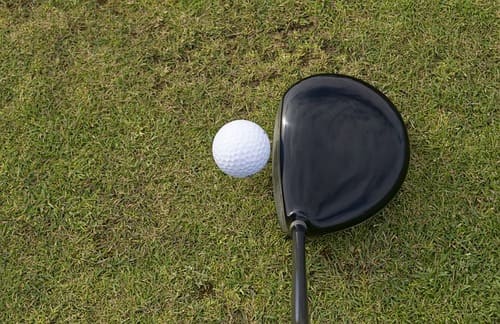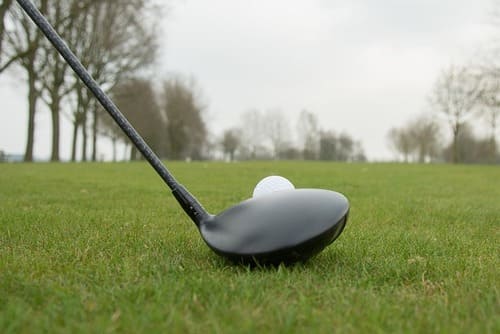Tee up, golf enthusiasts! Today, let’s demystify the low lofted golf club. These sleek wonders are the daredevils of the bag, craving distance and speed with their flatter trajectory. In this post, we unravel the why, when, and how of these power-packed clubs.
Whether you’re a seasoned pro or a golfing greenhorn, discover the situations where they shine, the players who swear by them, and elevate your game with their dynamic magic.
Get ready to spice up your golf lingo, impress your buddies, and embark on a fairway adventure with the low lofted wonders of the golf world.
Understanding the Concept of Loft in Golf Clubs
The concept of loft in golf clubs is essential to understanding how the clubs perform and impact the shots on the course. Loft refers to the angle of the clubface in relation to the shaft. It plays a crucial role in determining the trajectory and distance of the golf ball.
Higher lofted clubs, such as wedges, have a greater angle between the clubface and the shaft. This results in a higher shot trajectory. On the other hand, a low lofted golf club, like drivers or irons, have a smaller angle. This produces a lower and more penetrating ball flight.
Understanding the concept of loft is fundamental for golfers of all skill levels. The loft of a club directly affects the launch angle of the ball. Which, in turn, affects its trajectory and overall distance. For instance, a higher lofted club can be beneficial when trying to hit a shot with a high trajectory. For instance, like hitting over a tall tree or stopping the ball quickly on the green.
Conversely, lower lofted clubs are ideal for shots that require a lower, more penetrating flight. Such as driving the ball off the tee or getting more distance on fairway shots. By comprehending the concept of loft, golfers can make informed decisions on which club to use in various situations on the course. This leads to more effective and accurate shots.
The Role of Loft in Golf Shots: A Brief Overview
When it comes to playing golf, understanding the role of loft in golf shots is essential for success on the course. Loft refers to the angle of the clubface that determines the trajectory and the height of the ball flight. Different golf clubs have varying degrees of loft, and each club serves a specific purpose in a golfer’s arsenal. Clubs with higher loft angles, such as wedges and short irons, produce a higher trajectory. This makes them ideal for shots that require precision and control.
The role of loft in golf shots cannot be underestimated, as it directly affects the distance and accuracy of the ball. For long shots that require distance, drivers and fairway woods with lower loft angles are generally used. Their low loft angles allow golfers to achieve maximum distance by reducing the backspin on the ball.
On the other hand, for shots that require a higher trajectory or shots around the green, clubs with higher loft angles, such as the pitching wedge or sand wedge, are utilized to generate more spin and control the ball better. Understanding the importance of loft and knowing which club to use in different situations is crucial in optimizing your golf game and achieving better results on the course.
Different Types of Golf Clubs and Their Lofts
Golf clubs come in various types, each designed for specific purposes on the golf course. The driver, also known as the 1-wood, is the club with the lowest loft angle. This usually ranges from 7 to 12 degrees. With its long shaft and large head, the driver is primarily used for tee shots on long par-4 and par-5 holes. Its low loft allows for maximum distance off the tee, making it the go-to club for powerful drives.
Moving on to irons, these clubs have more loft than the driver. This allows for higher shots with greater accuracy and control. The 3-iron typically has a loft angle of 20 degrees, while the 9-iron has a loft angle of around 45 degrees.
The design of irons features a shorter shaft and smaller clubhead compared to the driver. Thus making them suitable for various distances and situations on the golf course. From long shots in the fairway to shots around the green, irons are versatile clubs that can be used in multiple scenarios to achieve different outcomes.
Exploring the Characteristics of Low Lofted Golf Clubs
A low lofted golf club, such as drivers and fairway woods, offer specific characteristics that cater to the needs of players looking to hit long-distance shots. One key characteristic of low lofted clubs is their minimal amount of loft, which typically ranges from 8 to 12 degrees. This low amount of loft allows golfers to achieve higher ball speeds and lower launch angles. This results in greater distance off the tee or from the fairway.
Another characteristic of low lofted clubs is their larger clubhead size. With a larger clubhead, players have a larger sweet spot or area on the face of the club that produces optimal contact with the ball. This maximizes the energy transfer from the club to the ball, resulting in a more powerful shot.
Additionally, the larger clubhead also increases forgiveness. This means that shots slightly mis-hit can still maintain a decent level of distance and accuracy. These characteristics of low lofted golf clubs make them a popular choice for golfers who prioritize distance and are comfortable with a lower trajectory.
Advantages of Using Low Lofted Golf Clubs
When it comes to golf clubs, low lofted clubs have their own set of advantages that make them a popular choice among golfers. One significant advantage of using low lofted golf clubs is increased distance. Due to their lower loft angle, these clubs allow for longer shots. This makes them ideal for players who want to achieve maximum distance off the tee or fairway.
Another advantage of low lofted golf clubs is their efficiency in windy conditions. The lower loft reduces the amount of backspin on the ball. Thus making it less susceptible to the effects of strong winds. This can make a significant difference when playing on a breezy day. Which allows golfers to maintain control over their shots and keep the ball on target.
Additionally, low lofted clubs can be handy when playing on hard or fast greens, as they promote a lower ball flight and increased roll upon landing. This can result in more accurate and consistent shots, especially when approaching the green or playing for a particular target area.

Understanding the Ideal Situations to Use Low Lofted Golf Clubs
In golf, understanding the ideal situations to use low lofted golf clubs can greatly enhance your overall gameplay. These clubs are specifically designed to provide less loft or elevation to the ball when struck. The ideal situations for using low lofted golf clubs include long shots and shots that require a lower trajectory.
One such situation is when you need to hit the ball over a long distance. Low lofted golf clubs, such as a driver or a fairway wood, allow for a more powerful swing, enabling the ball to cover greater distances.
Additionally, when you find yourself in a situation where you need the ball to stay low and roll out. Such as in windy conditions or when playing on a firm fairway, low lofted clubs can be extremely effective.
Utilizing these clubs in such situations allows you to keep the ball under the wind and gain more distance with each shot. Overall, understanding when and how to use low lofted golf clubs is crucial for any golfer looking to improve their performance on the course.
Key Factors to Consider When Choosing a Low Lofted Golf Club
When considering a low lofted golf club, there are several key factors that golfers should keep in mind. Firstly, understanding the player’s skill level is crucial. A golfer with a higher skill level may be able to handle a lower lofted club more effectively, whereas a beginner may struggle with the added difficulty. It is important to choose a club that matches the player’s abilities to ensure optimal performance on the course.
Additionally, the player’s swing speed should also be taken into consideration. A low lofted club requires a higher swing speed to generate the necessary power and distance. Players with lower swing speeds may find it challenging to make solid contact with a low lofted club. Which results in poorer outcomes on their shots. Therefore, it is crucial for golfers to assess their skill level and swing speed before selecting a low lofted golf club.
Furthermore, understanding the specific playing conditions is another key factor in choosing a low lofted golf club. Golfers should consider the type of course they typically play on, as well as the prevailing weather conditions. In windy conditions, a lower lofted club may be beneficial as it can help keep the ball lower. As well as to reduce the effect of the wind.
On the other hand, in situations where a player needs to hit the ball higher, such as over obstacles or onto an elevated green, a higher lofted club would be more suitable. By considering the playing conditions, golfers can select a low lofted club that best suits their needs and maximizes their chances of success on the course.
Tips and Techniques for Properly Using Low Lofted Golf Clubs
To get the most out of your low lofted golf clubs, it’s important to understand the proper technique and implement effective tips during your game. Firstly, grip plays a crucial role in maximizing control and power when using these clubs.
Make sure to have a firm grip, ensuring that your hands are placed slightly ahead of the clubhead at address. This promotes a downward strike on the ball, generating a more effective launch trajectory. Additionally, maintaining a relaxed grip pressure throughout your swing allows for better clubface control and improved accuracy.
Proper ball position is another essential aspect to consider when using low lofted golf clubs. Positioning the ball slightly forward in your stance helps to ensure optimal launch conditions. This position allows you to effectively compress the ball, generating a desired lower ball flight.
Moreover, it is important to maintain a steady tempo and rhythm during your swing. As this promotes consistent contact and ball flight. By focusing on these fundamental aspects of technique, you can enhance your performance with low lofted golf clubs. Which will allow you to achieve more desirable shot results.
Common Mistakes to Avoid When Using Low Lofted Golf Clubs
One common mistake to avoid when using low lofted golf clubs is failing to adjust your swing speed. These clubs are designed to hit the ball longer distances, but they require a faster swing speed to achieve optimal results. If you use the same swing speed as you would with a higher lofted club, you may find that the ball doesn’t travel as far as you’d like. To maximize the distance and effectiveness of your shots with low lofted clubs, it’s important to generate more clubhead speed through a faster swing.
Another mistake to avoid is using low lofted clubs in situations where higher loft is necessary. Low lofted clubs, such as a driver or a 3-wood, are typically used for tee shots and long distance shots. However, in certain situations such as hitting over a hazard or getting out of thick rough, a higher lofted club may be more appropriate.
Trying to use a low lofted club in these situations can result in a poor shot, as the ball may not have enough height or spin to clear the obstacle or escape the rough effectively. It’s important to assess the situation and select the appropriate lofted club for the shot at hand to achieve the desired outcome.
Improving Your Game with Low Lofted Golf Clubs: Practice and Training Tips
Improving your game with low lofted golf clubs requires dedicated practice and effective training techniques. First and foremost, it is essential to focus on your technique and swing mechanics. Start by mastering your posture and alignment, ensuring your body is properly aligned with the target. Next, work on your grip, making sure it is firm yet comfortable, allowing for a controlled and consistent swing.
Another crucial aspect of training with low lofted clubs is honing your distance control. Pay attention to your tempo and rhythm, as this will greatly influence the accuracy and distance of your shots. Practice hitting different targets at varying distances, gradually increasing the complexity as you improve.
This will help develop a better sense of clubhead speed and control, allowing you to hit the ball precisely and consistently. It is also recommended to practice with a professional golf coach who can provide valuable insights and guidance tailored to your specific needs. Remember, consistent practice and focused training are key to improving your game with low lofted golf clubs.

FAQs
What is loft in golf clubs?
Loft refers to the angle of the clubface relative to the ground. It determines the trajectory and distance of the golf shot.
What role does loft play in golf shots?
Loft plays a crucial role in determining the height and distance of a golf shot. It affects the trajectory, spin, and landing angle of the ball.
What are the different types of golf clubs and their lofts?
The different types of golf clubs include drivers, fairway woods, hybrids, irons, and wedges. Each club has a specific loft, with drivers having the lowest loft and wedges having the highest.
What are low lofted golf clubs?
Low lofted golf clubs typically refer to drivers and fairway woods that have a lower loft angle, usually between 8 to 15 degrees.
What advantages do low lofted golf clubs offer?
Low lofted golf clubs are designed to hit the ball farther and lower. They are ideal for long shots off the tee or when playing on windy conditions.
When should I use low lofted golf clubs?
Low lofted golf clubs are best used when you want to hit the ball long distances, have a strong swing, or need to combat strong winds.
What factors should I consider when choosing a low lofted golf club?
Factors to consider include your skill level, swing speed, preferred shot trajectory, and the specific conditions you typically play in.
What are some tips for using low lofted golf clubs effectively?
Some tips include practicing proper setup and alignment, maintaining a smooth swing tempo, and adjusting your stance based on the club’s length and loft.




